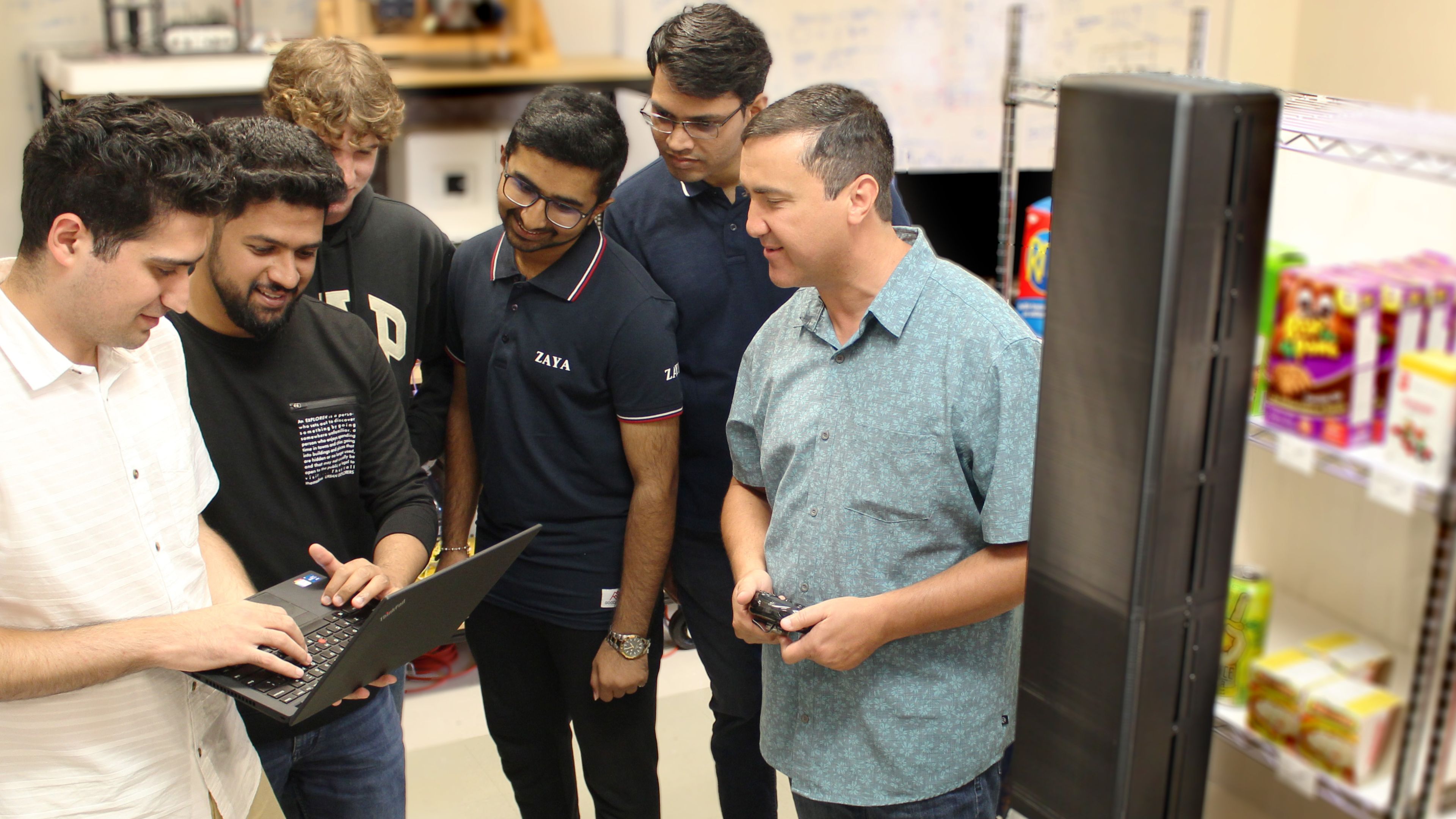Retail Robot

With so many visual merchandising applications now available, creating the perfect planogram is no longer the challenge it was 10 years ago. Now, the question is how to ensure planogram compliance.
The David Sobey Centre has teamed up with Dr. Adel Merabet, Professor of Engineering at SMU, to create a retail robot that’s about to put the task of monitoring the store layout on autopilot. Designed to patrol the aisles while customers are in the store, the robot will help prevent gaps in store shelves, and help to ensure price and planogram compliance.
The robot is leading the way toward a “hybrid” workforce for retail, showing the transformational benefits that can be gained when robots work alongside human employees.
Meet the new Head of Planogram Compliance
The robot that’s about to take charge of planogram compliance stands about 5.5 feet tall, and its simple, geometric design camouflages its sophisticated capabilities.
The machine consists of a slim tower on a slightly wider base. A row of tiny cameras runs up the shaft of the tower, enabling the robot to “see” shelving, products, price tags, and other items in its surroundings. Tucked into its base are a laser sensor and a 3D camera, which enable it to navigate the store floor plan.
Once programmed with an up-to-date planogram, the machine glides up and down aisles, surveying the shelves. Without any human intervention, its cameras capture a range of visual data, including product placement, product position, and price tags.
Once the robot has patrolled the entire store, it transmits the information it has collected to a computer, which performs a detailed data analysis and produces a shelf-by-shelf visual report. At a glance, store staff can then see where stock is low, or misplaced, price tags are missing, or an item is mispriced.
With the robot on patrol, merchandisers and store managers can rest assured that the planogram they’ve so carefully planned is being executed to spec, maximizing the sales potential of each product.
Benefits of a hybrid approach to planogram management
In stores of the future, robots and humans will work side by side, as they already do in warehouses and distribution centres. Machines like the David Sobey Centre's robot will take on routine tasks, freeing up humans to do more meaningful work, such as serving customers.
In this not-so-distant scenario, human employees will empathize with customers and provide a personalized shopping experience while a future version of this retail robot operates in the background.
Almost invisibly, the robot will also integrate with other store systems, including inventory management software, boosting efficiency on multiple fronts, including:
- Prevent gaps on shelves due to low or missing stock
- Reduce the amount of time needed to replenish shelves
- Automatically trigger a reorder when stock is running low
- Alert maintenance to spills or obstacles on the floor
- Avoid losses due to missing or mislabeled price tags
- Provide data insights regarding purchase frequency and customer behaviour
To deliver these benefits, it’s important that the robot blend into the background. That’s why Dr. Merabet has avoided giving the machine robot human-like features, such as mechanical “arms” or facial features. Some customers may find it entertaining to be greeted by a life-like robot as they browse the aisles of their local grocery store, but others may find the experience unnerving.
But don’t let the nondescript appearance of the machine fool you. It may look ordinary, but it’s about to make extraordinary changes to the ways retailers implement visual merchandising.
What’s next?
Dr. Merabet’s lab attracts top graduate students from around the world, who are helping to develop the retail robot’s capabilities.
The team now has a functional prototype of a robot, which they are continually improving. To make the machine store-ready, they’re refining its navigation system and training it to respond to different store scenarios, such as being bumped by a customer or coming upon a shopping cart in the middle of the aisle.
The goal is to create an automated store assistant that will blend seamlessly into the store environment. This will enable retailers to leverage the power of robotics while keeping the human aspects of the shopping experience enjoyable and appealing.